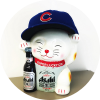Cocktail summary
Created by
Jose Abeal y Otero, Sloppy Joe's Bar, Havana, Cuba
Year
1932
Is an
authentic recipe
Cognac, Ruby Port, Curaçao, Bitters
PT5M
PT0M
Cocktail
Cocktail
1
craft, alcoholic
3.5
6
